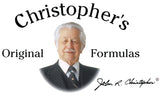Ginkgo Leaf
This is a glabrous, sparsely branched tree, reaching up to 120 feet tall. The leaves are alternate or in clusters and fan shaped with parallel veins on long slender petioles. Flowers are catkin-like. The yellowish fruit is drupe-like, about 1 inch long, with ill-smelling pulp surrounding the thin shelled, creamy-white nut which contains an edible sweet kernel. It is native of east China and now cultivated throughout the U.S. as a street or ornamental tree. The kernel (seeds),gathered in the fall are edible. Remove toxic flesh from the seeds and cook. The leaves & seeds have vascular integrity and used in Chinese medicine for the lungs.
UPC: 084783006046.
Origin(s): China, Germany, United States.
Latin Name(s): Ginkgo biloba.
Also known as: Fossil tree, maidenhair tree, kew tree, bai guo ye, yinhsing.
Plant Part(s) Used: Leaf.
Appearance: Light yellowish green.
Aroma: Sweet, somewhat like tobacco.
Taste: Slightly bitter, astringent.
GMO Status: Non-GMO.
Allergen: None.
Additives: Free of any additives or preservatives.
Applications / Preparations: Can be put into capsules, teas or infused as an herbal extract.
Storage: Store in a sealed container in a cool, dry place.
Shelf Life: It is very difficult to pin down an exact expiration date for most single herbs as they do not really expire, they lose potency or strength over time but will still have value. Unlike synthetic material or drugs, herbs can contain many constituents that contribute to their medicinal effects. Even if when we know what the active constituents are, there are often many of them in a single herb, each with different rates of degradation. Some herbs lose their effect more easily. Other herbs that possess more stable compounds such as alkaloids or steroids will last much longer.
A huge part of the degradation rate of herbs depends also on the storage conditions of the herb, & even on the quality of the herb before storage – how it was grown, harvested, dried & processed. If the product is left in hot places or open to sunlight then it will degrade much quicker than if it was stored in cool, dry place & sealed tightly.
A good rule of thumb is that herbs should be stored no longer than 2-3 years but many herbs will have great strength much longer than that. To determine if a an herb is still good you can check the appearance & aroma. Herbs that are no longer acceptable will have lost much of its vibrant color & will instead appear dull & faded. The bigger key though is to smell the raw materials to see if the potent aroma is still present.
Warning: Use in persons with coagulation disorders should be under the supervision of a qualified healthcare practitioner.




